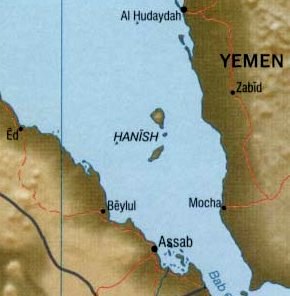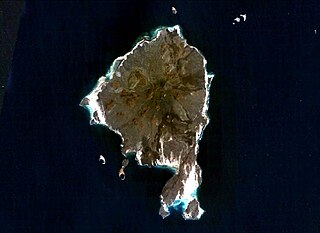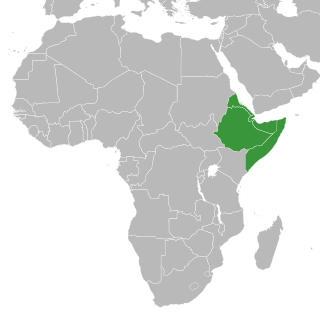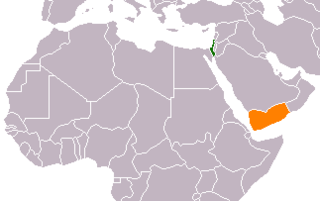
Eritrea is an ancient name, associated in the past with its Greek form Erythraia, Ἐρυθραία, and its derived Latin form Erythræa. This name relates to that of the Red Sea, then called the Erythræan Sea, from the Greek for "red", ἐρυθρός, erythros. But earlier Eritrea was called Mdre Bahri. The Italians created the colony of Eritrea in the 19th century around Asmara and named it with its current name. After World War II, Eritrea annexed to Ethiopia. Following the communist Ethiopian government's defeat in 1991 by the coalition created by various armed groups notably the EPLF and the TPLF among others, Eritrea declared its independence. Eritrea officially celebrated its 1st anniversary of independence on May 24,1993.

The Politics of Eritrea and the Government of Eritrea takes place in a framework of a single-party presidential republican totalitarian dictatorship. The President officially serves as both head of state and head of government. The People's Front for Democracy and Justice is the only political party legally permitted to exist in Eritrea. The popularly elected National Assembly of 150 seats, formed in 1993 shortly after independence from Ethiopia, elected the current president, Isaias Afwerki. There have been no general elections since its official independence in 1993. A new constitution was drafted in 1993 and ratified in 1997, but has not been implemented. Since the National Assembly last met in January 2002, President Isaias Afwerki has exercised the powers of both the executive and legislative branches of government.

Yemen is located in West Asia, at the southern tip of the Arabian Peninsula, between Oman and Saudi Arabia. It is situated at the entrance to the Bab-el-Mandeb Strait, which links the Red Sea to the Indian Ocean and is one of the most active and strategic shipping lanes in the world. Yemen has an area of 555,000 square kilometres (214,000 sq mi), including the islands of Perim at the southern end of the Red Sea and Socotra at the entrance to the Gulf of Aden. Yemen's land boundaries total 1,746 kilometres (1,085 mi). Yemen borders Saudi Arabia to the north and Oman to the northeast. Through the Socotra island, Yemen also shares borders with the Guardafui Channel and the Somali Sea.

The Yemeni Armed Forces are the military forces of the Republic of Yemen. They include the Yemeni Army, Yemeni Navy and the Yemeni Air Force. The capital of the country, Sana’a is where the military is headquartered. Per the constitution of Yemen, the President of Yemen serves as the commander-in-chief.

Abdul Karim Ali Al-Iryani was a Yemeni politician who served as the Prime Minister of Yemen from 29 April 1998 to 31 March 2001. Al-Iryani, along with President Ali Abdullah Saleh, was the Secretary General of the General People's Congress (GPC).

An exclusive economic zone (EEZ), as prescribed by the 1982 United Nations Convention on the Law of the Sea, is an area of the sea in which a sovereign state has exclusive rights regarding the exploration and use of marine resources, including energy production from water and wind. EEZ does not define the ownership of any maritime features within the EEZ.

The Hanish Islands is an archipelago in the Red Sea consisting of a trio of major islands at the centre of an array of smaller islets and rocks. The three major islands are the northern Zuqar Island, the southern Great Anish, and the significantly smaller Little Anish in between. The archipelago is largely under the control of Yemen, with only several small south-western rocks and islets granted to Eritrea following the Hanish Islands conflict in 1994-1995.

Zuqar Island is an island in the Red Sea that belongs to Yemen. It lies between the coasts of mainland Yemen and Eritrea, near the Bab-el-Mandeb straits which connect the Red Sea to the Gulf of Aden. Despite its proximity to the African continent, Zuqar Island is considered a part of Asia because it sits on the Asian continental shelf. It is appropriately 130 km2.

Conflicts in the Horn of Africa have been occurring since the 17th century BCE. The Horn of Africa includes the nations of Djibouti, Eritrea, Ethiopia, and Somalia.

Jabal al-Tair Island is a roughly oval volcanic island in Yemen, northwest of the constricted Bab al-Mandab passage at the mouth of the Red Sea, about halfway between mainland Yemen and Eritrea. From 1996 until an eruption in 2007, Yemen maintained two watchtowers and a small military base on the island.

Ethiopia–Israel relations are foreign relations between Ethiopia and Israel. Both countries re-established diplomatic relations in 1992. Ethiopia has an embassy in Tel Aviv. Israel has an embassy in Addis Ababa. Israel has been one of Ethiopia's most reliable suppliers of military assistance, supporting different Ethiopian governments during the Eritrean War of Independence.

The Yemeni Navy and Coastal Defence Forces is the maritime component of the Yemeni Armed Forces. Yemen's navy was created in 1990 when North and South Yemen united.
Eritrea is one of the three non-member states of the Arab League which adopted Arabic as a working language. Eritrea chooses not to be a part of the Arab League.

There are no diplomatic relations that exist between Israel and Yemen and relations between the two countries are very tense. Yemen refuses the admission of people with an Israeli passport or any passport with an Israeli stamp, and the country is defined as an "enemy state" by Israeli law. During the 2023 Israel–Hamas war war, the Iran backed Houthi movement in Yemen launched missile attacks against Israel and ships in the Red Sea.

Eritrea–Yemen relations refers to the current and historical relationship between Eritrea and Yemen. The states fought briefly over the Hanish Islands in the Red Sea in 1995. In 2004, Eritrean President Isaias Afewerki was invited to and visited Yemen for a two-day working visit. He was accompanied by a number of government ministers and high-ranking military personnel, including foreign minister Ali Said Abdella.
Abdullah al-Saidi is a Yemeni diplomat. He served as the Yemeni Ambassador to the United Nations from 22 July 2002 to 2011, replacing Abdullah Saleh al-Ashtal. He quit his position over the 2011 Yemeni uprising. He was replaced by Jamal Abdullah al-Sallal as the Ambassador to the UN.

Eritrea–Israel relations are foreign relations between Eritrea and Israel. Both countries established diplomatic relation in 1993 following Eritrean independence. Eritrea has an embassy in Ramat Gan and Israel had an embassy in Asmara, that was closed in 2022. Their ties were considered as very close, but after 2020 the relations worsened. Both Eritrea and Israel have shared access to the Red Sea.
Events in the year 1995 in Eritrea.















